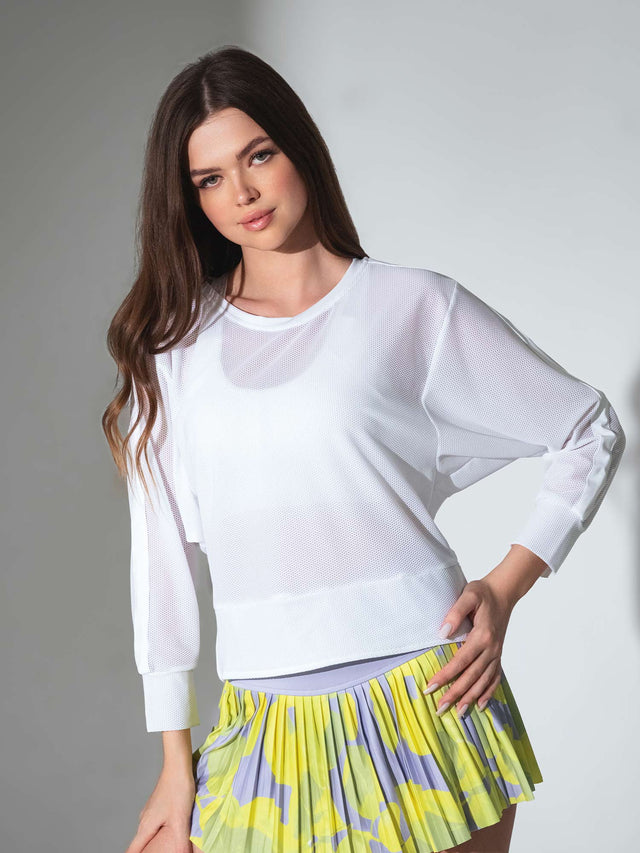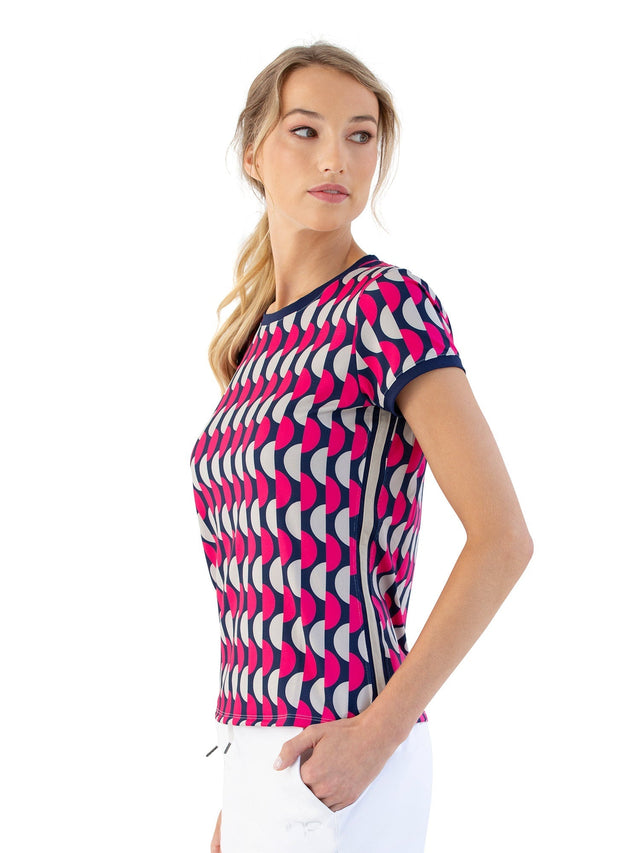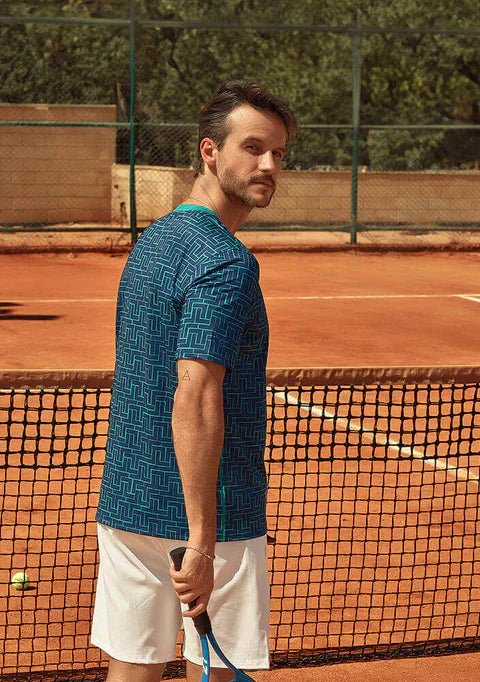Sustainable fashion isn't just a trend—it's the future. At inPhorm, we’re proud to lead the shift with our commitment to sustainable fabrics in sportswear. By choosing better materials, we protect the environment while offering superior performance and style.
Explore our collection of eco-conscious activewear designed for mindful movement.
Why Fabric Choice Matters in Activewear
The type of fabric used in sportswear affects everything—comfort, durability, breathability, and environmental footprint. Conventional textiles like virgin polyester and nylon are resource-intensive and harmful to ecosystems.
Sustainable fabrics in sportswear aim to solve these problems while supporting health, style, and sustainability.
Key benefits include:
- Reduced water and energy use
- Fewer carbon emissions
- Safer for skin and sensitive users
Table: Comparison of Common Fabrics
|
Fabric Type |
Environmental Impact |
Breathability |
Biodegradability |
Common Use in Activewear |
|
Virgin Polyester |
High |
Moderate |
No |
High |
|
Organic Cotton |
Low |
High |
Yes |
Medium |
|
Recycled Polyester |
Medium |
Moderate |
No |
High |
|
Bamboo Fabric |
Low |
High |
Yes |
Growing |
|
Nylon |
High |
Moderate |
No |
High |
Organic Cotton: The Natural Choice
Organic cotton is grown without pesticides or synthetic fertilizers. It’s gentle on the skin and the planet. Unlike regular cotton, it supports biodiversity and uses significantly less water.
Advantages:
- Hypoallergenic and soft
- Strong, breathable, and durable
- Fully biodegradable
Explore our eco-cotton tops and layers for mindful workouts and everyday wear.
Recycled Polyester: Giving Plastic a New Purpose
One of the most popular eco-friendly textiles, recycled polyester is made from plastic bottles and other post-consumer waste. It maintains the durability of traditional polyester but with less impact.
Benefits include:
- Strong, stretchable, and moisture-wicking
- Reduces landfill and ocean plastic waste
- Lower carbon footprint than virgin polyester
InPhorm’s recycled performance line proves sustainability doesn’t mean compromise.
Bamboo Fabric: Soft, Sustainable, and Breathable
Bamboo fabric is gaining attention as a soft, breathable, and fast-growing alternative in sustainable sportswear. It grows rapidly without pesticides and requires minimal irrigation.
Key Features:
- Antimicrobial properties
- Thermo-regulating for all seasons
- 100% biodegradable
InPhorm incorporates bamboo blends in select yoga-friendly essentials, perfect for calm movement and cool comfort.
Infographic: Environmental Benefits of Sustainable Fabrics
🟩 Organic Cotton – 91% less water use, no pesticides
♻️ Recycled Polyester – Saves 30% energy vs. virgin polyester
🎍 Bamboo – Grows 10x faster than trees, minimal land required
🌍 Result – Lower emissions, healthier ecosystems, safer fabrics
Material Innovation in Sportswear
Modern consumers expect more from their activewear. Material innovation is critical to deliver comfort, performance, and sustainability.
Emerging materials include:
- TENCEL™ (lyocell): From eucalyptus pulp, highly breathable
- Hemp blends: Strong, long-lasting, and mold-resistant
- SeaCell™: Algae-based fabric rich in skin nutrients
InPhorm’s R&D team continually explores new textiles that meet our sustainability promise and your performance needs.
Durability and Longevity: The Eco Advantage
Eco-fabrics aren’t just about green benefits—they’re built to last. Choosing sustainable fabrics in sportswear often results in more durable products that withstand the test of time and wear.
Durable traits to look for:
- Reinforced stitching
- Anti-pilling texture
- Stretch retention
This translates into better value and fewer replacements. Try our core activewear staples to feel the difference.
Comfort That Performs
Sustainable fabrics provide a unique balance of comfort and support. Whether it's a high-intensity run or a calm yoga session, eco-materials move with your body and breathe with your skin.
Comfort highlights:
- Sweat-wicking technology in bamboo and recycled poly
- Soft touch from organic cotton
- Zero chafing with seamless designs
See our customer reviews for real feedback on comfort and fit.
Ethical Benefits of Choosing Sustainable Fabrics
Behind every InPhorm product is a commitment to fair trade and ethical labor. We believe fabric choice isn't just about performance—it's about people.
Social benefits include:
- Fair wages and safe working conditions
- Transparent sourcing practices
- Support for small farming communities
Our ethical supply chain is explained further on our about page.
Chart: Key Performance Features by Fabric
|
Feature |
Organic Cotton |
Recycled Polyester |
Bamboo Fabric |
|
Moisture-Wicking |
Moderate |
High |
High |
|
Antibacterial |
Low |
Low |
High |
|
Flexibility |
Moderate |
High |
High |
|
UV Protection |
Moderate |
High |
High |
Tips for Buying Sustainable Activewear
Whether you’re new to green fashion or upgrading your workout wardrobe, here are some expert tips:
- Read labels carefully—look for certified materials
- Choose timeless pieces that can mix and match
- Avoid fast fashion brands with vague sustainability claims
- Buy less, choose better—quality over quantity
Need assistance? Contact our team here for personalized help.
Final Thoughts: Why Fabric Choice Matters
Choosing the right material isn’t just a style decision—it’s an impact statement. Sustainable fabrics in sportswear offer the perfect combination of performance, comfort, and responsibility.
With InPhorm’s commitment to organic cotton, recycled polyester, and bamboo fabric, we’re building a better future for you and the planet.
Explore our complete eco-conscious collections here, or reach out to us through our contact page to start your sustainable wardrobe journey today.
Frequently Asked Questions
Sustainable fabrics refer to textiles that are produced using methods that minimize harm to the environment, support ethical labor practices, and offer long-lasting wear. This includes reducing water usage, avoiding harmful chemicals, and sourcing renewable or recycled materials.
These fabrics are often certified by independent organizations and are part of a broader commitment to circular fashion. In essence, sustainable fabrics ensure the product you wear is safer for both the planet and the people who make it.
Yes, recycled polyester—when processed and manufactured according to safety standards—is completely safe for skin contact. It's made by breaking down post-consumer plastic waste, such as water bottles, and re-spinning it into high-quality fibers.
Modern recycling processes eliminate contaminants, resulting in clean, durable, and hypoallergenic fabric. It's a top choice in performance apparel due to its moisture-wicking ability, stretch, and long-term durability—making it just as effective as virgin polyester, with a lower environmental footprint.
To identify eco-friendly activewear, start by reading the fabric label. Look for materials like organic cotton, recycled polyester, TENCEL, or bamboo fabric. These are commonly used in sustainable clothing lines due to their reduced impact on the environment.
Certifications also provide assurance. Reputable eco-certifications include:
GOTS (Global Organic Textile Standard) for organic materials OEKO-TEX® Standard 100, indicating safety from harmful chemicals Bluesign® for environmentally friendly productionAdditionally, transparent brands—like InPhorm —often outline their sustainability initiatives right on their product or About Us pages.
Sustainable activewear may appear more expensive upfront, but it offers excellent long-term value. These garments are made from higher-quality, durable materials that hold their shape and function over time, reducing the need for frequent replacements.
You’re also paying for ethical labor practices, non-toxic dyes, and eco-conscious sourcing—investments that support the health of workers and the planet. In the long run, sustainable fashion can actually save money by offering better performance, comfort, and longevity than fast fashion alternatives.
More stories

Benefits of Choosing Sustainable Sportswear


